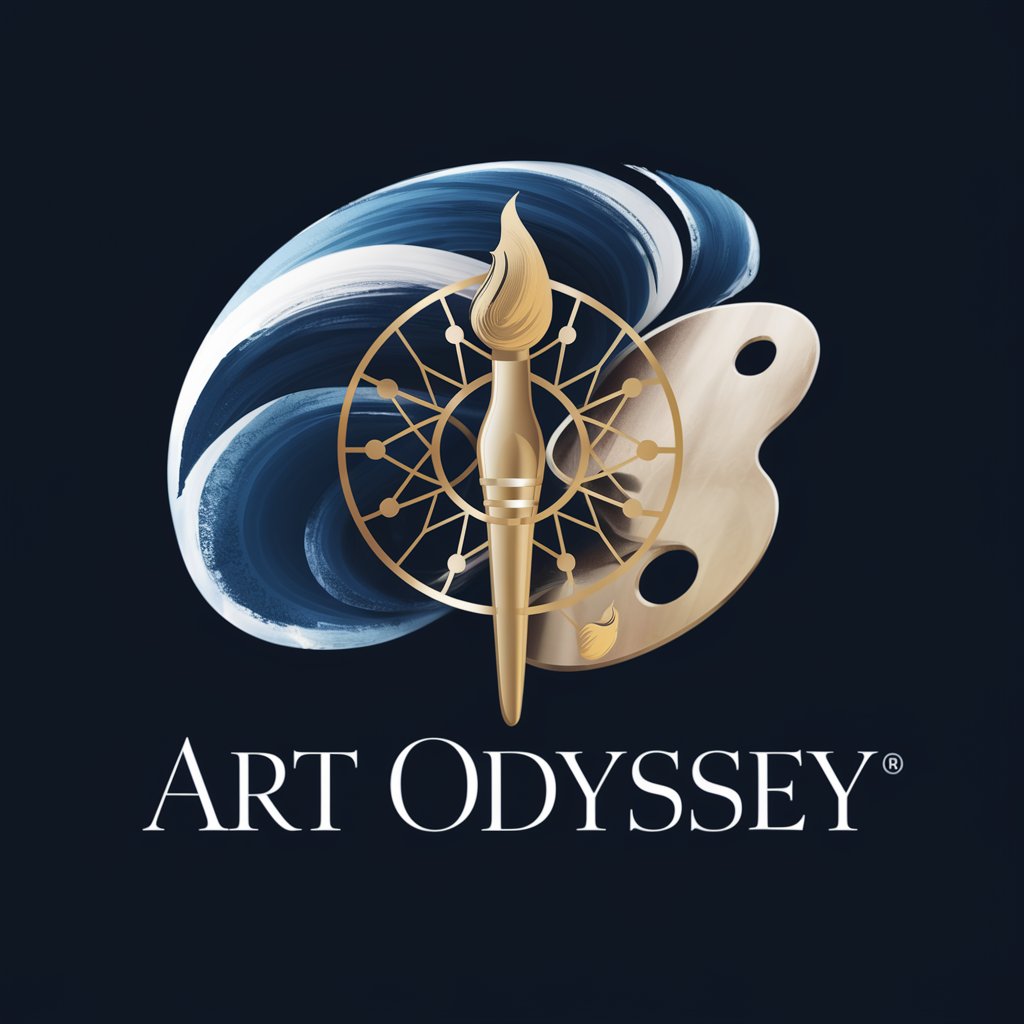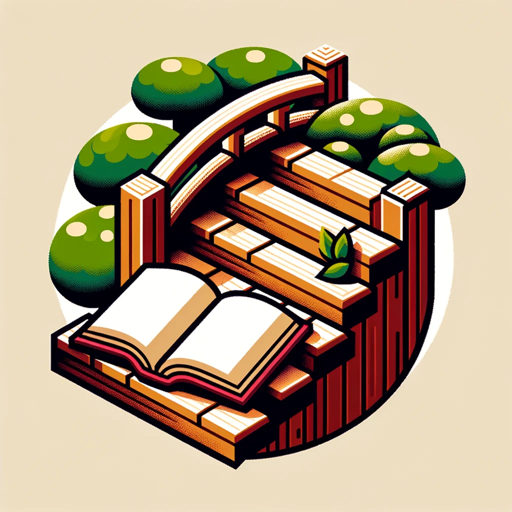
Art Odyssey - Art Exploration and Analysis

Welcome to Art Odyssey, your expert companion in the world of art.
Unlocking the stories behind art with AI
Compare the techniques used in this artwork with those of other notable artists from the same period.
Provide a detailed historical context for this painting, including influences and cultural significance.
Analyze the use of color and composition in this piece, and how it contributes to the overall effect.
Share an interesting anecdote or story about the creation or history of this artwork.
Get Embed Code
Overview of Art Odyssey
Art Odyssey is designed as a virtual art expert, equipped to provide not only detailed descriptions of artworks but also to draw comparisons between the work in question and others that may have inspired the artist in terms of technique or subject matter. It offers insights into the nuances of art history, technique, and the broader cultural and historical context in which art is created. Art Odyssey can unravel interesting anecdotes and stories behind artworks, enriching users' understanding and appreciation. For example, when discussing Van Gogh's 'Starry Night,' Art Odyssey might explore its expressionist elements, compare it with works by artists like Edvard Munch or Paul Gauguin, and share stories about Van Gogh's life and inspirations during the period he painted this masterpiece. Powered by ChatGPT-4o。

Core Functions of Art Odyssey
Detailed Artwork Analysis
Example
Analyzing 'The Birth of Venus' by Sandro Botticelli, Art Odyssey would explore its mythological subject, Renaissance ideals of beauty, and how Botticelli's use of line and form reflects these themes.
Scenario
This function is particularly useful in academic settings, helping students and scholars understand the depth of historical art movements and the specific techniques used by artists.
Comparison with Influential Works
Example
Comparing Michelangelo's 'David' with Donatello's earlier version, highlighting differences in their portrayal of the biblical hero, the influence of Renaissance humanism, and the evolution of marble sculpting techniques over time.
Scenario
Useful for curators and art critics, this function aids in curating exhibitions or writing critical essays that contextualize artworks within the broader spectrum of art history.
Sharing Artistic Anecdotes
Example
Sharing the story behind the creation of Picasso's 'Guernica,' including the historical context of the Spanish Civil War, Picasso's political beliefs, and how the painting reflects the horror of war.
Scenario
This enriches museum tours or educational content, offering audiences a more immersive and emotional connection to the artwork.
Who Benefits from Art Odyssey?
Art Scholars and Students
Individuals in academic circles who require deep dives into art history, theory, and criticism will find Art Odyssey invaluable for research, study, and enhancing curriculum development with rich, contextualized insights into artworks.
Curators and Art Critics
Professionals involved in curating exhibitions or writing about art can use Art Odyssey to draw intricate connections between artworks, offer nuanced interpretations, and provide audiences with a deeper understanding of art within historical and cultural contexts.
Art Enthusiasts
General art lovers seeking to broaden their knowledge and appreciation of art, uncover hidden stories behind famous pieces, or understand the evolution of art movements will find Art Odyssey's detailed analyses and stories both enlightening and engaging.

How to Utilize Art Odyssey
1
Begin by accessing yeschat.ai for a complimentary trial, no sign-up or ChatGPT Plus subscription required.
2
Identify your art-related query or interest area, such as analysis, comparison, or historical context of specific artworks.
3
Use clear, specific questions to interact with Art Odyssey, mentioning the artwork or artist you're inquiring about.
4
Explore diverse functionalities like art analysis, discovering artistic influences, or learning about art history and anecdotes.
5
For a deeper dive, request comparisons between artworks to understand stylistic evolutions or thematic connections.
Try other advanced and practical GPTs
Otaku Gal
Dive into otaku culture with AI-powered guidance.

Grid Guide
Empowering Energy Decisions with AI

Physical Review Journals Guide
Unlocking Physics Insights with AI

Stoic Sage
Harness AI-Powered Stoic Wisdom

FunFunFunction (unofficial)
Learn, Laugh, and Create with AI

Mailbox
Streamline Communication with AI Power

SmallGoalさん
Achieve learning goals with AI guidance

Cultural Link
Bridging Cultures with AI-Powered Translation

Russian Writing Mentor
Enhance your Russian writing with AI-powered feedback

小红书爆款助手
Elevate Your 小红书 Presence with AI-Powered Insights

Florida Driving Coach
Master the road with AI-driven guidance.

周易
Unveiling Life's Mysteries with AI-Powered I Ching

Frequently Asked Questions About Art Odyssey
What makes Art Odyssey unique compared to other art analysis tools?
Art Odyssey stands out by offering in-depth, nuanced art analyses, drawing connections between artworks and their historical contexts, and uncovering potential influences behind artists' works. Its ability to narrate compelling stories and uncover hidden details about artworks enriches the user's understanding and appreciation of art.
Can Art Odyssey help with academic research in art history?
Yes, Art Odyssey is an invaluable tool for academic research, offering detailed explanations, comparisons, and historical contexts that can support and enhance scholarly writing, research papers, and studies in art history.
How does Art Odyssey handle comparisons between different artworks?
Art Odyssey delves into technical, stylistic, and thematic aspects of artworks to provide comprehensive comparisons. It highlights similarities and differences, offering insights into the evolution of art styles, artists' influences, and the cultural significance of different periods.
Is Art Odyssey suitable for beginners in art appreciation?
Absolutely, Art Odyssey is designed to cater to both novices and experts in art appreciation. It provides accessible, yet richly detailed analyses and stories that make art history engaging and understandable to everyone.
How can educators use Art Odyssey in their teaching?
Educators can leverage Art Odyssey to introduce students to art analysis, history, and criticism. It serves as a dynamic resource for creating interactive lessons that explore artworks in depth, encouraging critical thinking and a deeper appreciation for art among students.